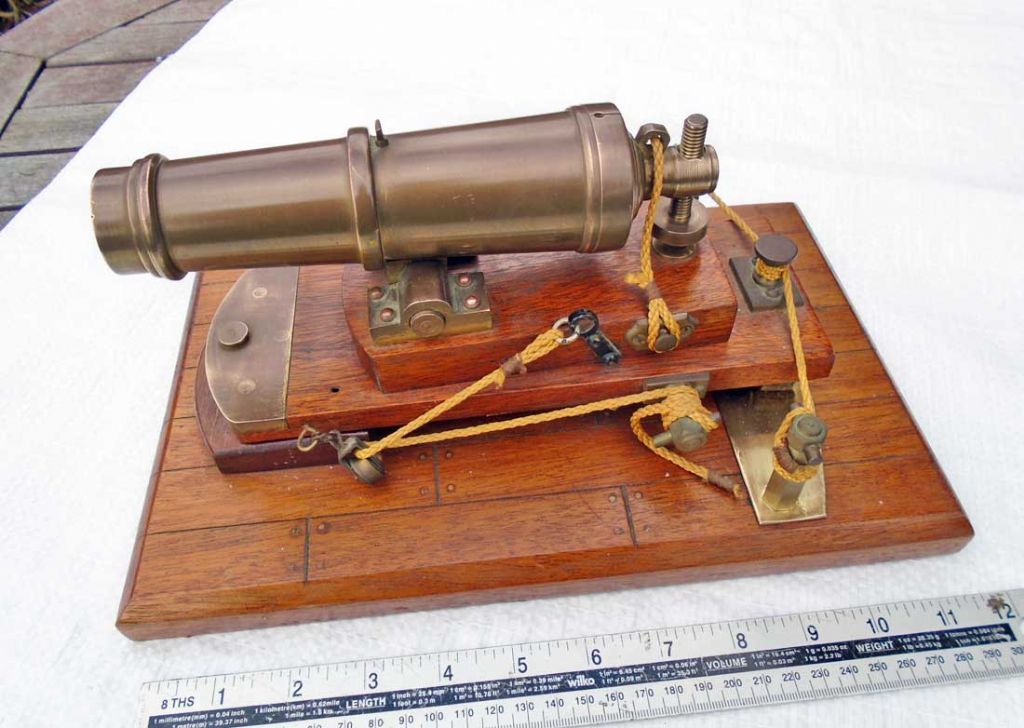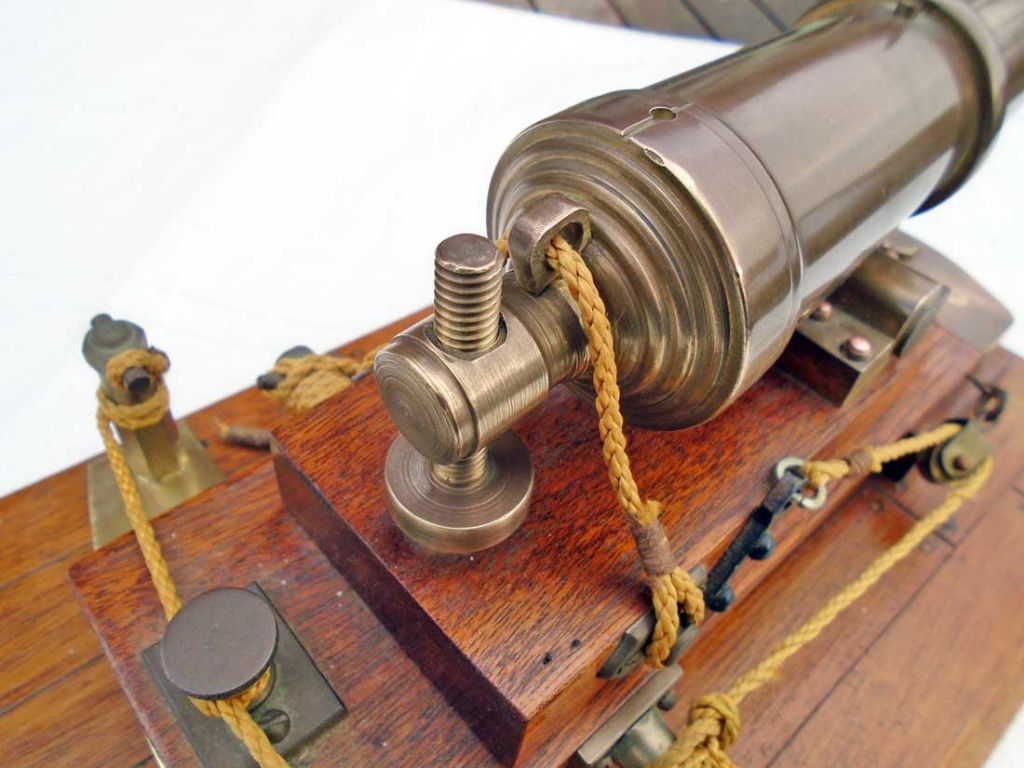Posted by Mick B1 on 07/12/2019 09:24:33:
Posted by Robin on 06/12/2019 23:08:51:
Does anyone know, was Carron the only cannon maker in Falkirk back c1800?
If a ships cannon is marked FALKIRK 6Pdr, is it safe to assume it is by Carron?
Probably not. Google is your friend:-

+1! Scotland was a major producer of Iron, perhaps 25% of all UK production, and there were many firms making and using Iron there.
Not all cast-iron back then was equally suitable for all purposes. Much depended on what was in the ore – unknown impurities – and tricks the Iron-founder knew that improved it. It happens that Scottish iron-ore produces a cast-iron well suited to cannon making, and – at a time when gun-making was hit and miss – guns made from Scottish cast-iron were reliable. Some English ores were also suitable, and both benefited from the Industrial Revolution. On average, British guns were safer than foreign ones, though the best foreign guns were as good as anything made in the UK.
British guns sold like hot cakes, Carronades being popular on merchant ships because they can be fired by an unskilled team of four and are effective against pirates. Pirates can't blast victims at long range – they want cargo and ship intact, which means they have to get up close and personal with the gun. Most preferred not to risk it.
Cast-iron improved significantly after 1841 due to advancing chemistry and metallurgy. The Artillery entry in Dr Ure's Dictionary of Arts, Manufactures and Mines quotes a US Government analysis of Cast Iron guns showing wide variances in density, tenacity, transverse strength, torsional strength, compressive strength, and hardness in the metal tested. The best cast-iron sampled was 5 times stronger than the worst. No surprise that guns often burst!
Dr Ure mentions purity (achieved by better chemistry), melt control (achieved with air-blowers driven by a Watt Steam engine), and cooling methods as making significant improvements to British cast-iron between 1841 and 1851. Controlled heat and cooling are important because they effect crystallisation, understanding which demanded a microscope and scientists. British cast-iron guns made before 1841: average density 7.148, tenacity 23,638. Guns cast in 1851: average density 7.289, tenacity 37,774.
Once their chemistry is understood, the special properties of local ore become less important. By tweaking the process, metal producers can accommodate a wide range of impurities and reliably churn out large quantities of metal to almost any specification.
Top quality cast-iron didn't last long as a gun-metal. By 1851, gun makers were moving to more promising alternatives released by science and technology, first Wrought-Iron, then Cast Steel. The carronade was more-or-less obsolete by 1850, pushed aside by faster firing more powerful weapons. Wrought-iron was rejected fairly quickly because it's expensive to make and has a grain structure like wood – strong and weak depending on direction. Took about 30 years to get cast-steel consistently right in large volumes, but that's what we've used since.
Artillery itself has a wobbly future. Guns are easily detected, for example by tracking the shell with radar, and they aren't easy to move quickly. Highly vulnerable to aircraft and guided missiles…
Dave
Hollowpoint.







